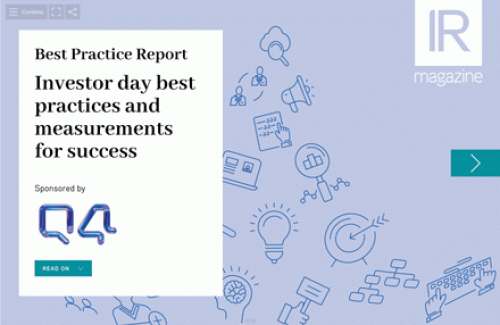Just when IROs were confident enough to return to a new ‘normal’ after the pandemic, investors and corporates have been hit with an uncertain economic and geopolitical situation. It’s a difficult and challenging working environment. Suddenly, IROs are thinking less about the shift from virtual to live events for pandemic purposes, and more about budgets.
Equally, many IR professionals undergoing their first real downturn are working out how to communicate with and give guidance to the market when there’s no real clarity on future performance. These are just some of the dynamics with which investor relations is grappling as we head toward a new year.

Cloud data-management business Informatica’s vice president of IR, Victoria Hyde-Dunn, says that from her perspective, IR professionals are grappling with two major challenges.
‘Given the increasing probability of an economic recession in the US in 2023 due to rising inflation and interest rates, it’s not a surprise that we are already seeing consensus estimates for sectors such as tech, consumer and retail starting to be trimmed for 2023.
‘As of June 2022, one sell-side analyst reported that 30 percent of her covered companies proactively lowered estimates for the second half of 2022 given the continued uncertain macro environment. It will be very interesting to see what happens come the January or February earnings call, when companies provide or update 2023 guidance estimates.
Trending down
‘Will this percentage apply to 2023 as well? Will management teams be ready to discuss a recession, and will that be global or US? Or if it’s just the light use of the ‘R’ word, how long they think it’s going to last? Is it a typical V-shape six to nine-month recession with a bounce back afterwards, or will recovery take a little bit longer, more like a 12 to 18-month cycle?’
Hyde-Dunn says if the economy is tipped into recession, many IROs are going to look to the past for lessons learned from the 2008 US recession and how firms navigated best practices for messaging and reporting business metrics. This is especially true when it comes to guidance.
‘The question teams will need to answer is whether they will continue to provide their regular guidance cadence, add more or provide fewer metrics, or have to pull quarterly or even full-year guidance again as we saw during the pandemic,’ Hyde-Dunn notes. ‘The market will also be looking at whether companies are open to providing preliminary numbers and commentary or preannouncing more than they have in the past. It’s all about managing expectations.’
This is an extract of an article that was published in the Winter 2022 issue of IR Magazine. Click here to read the full article.










